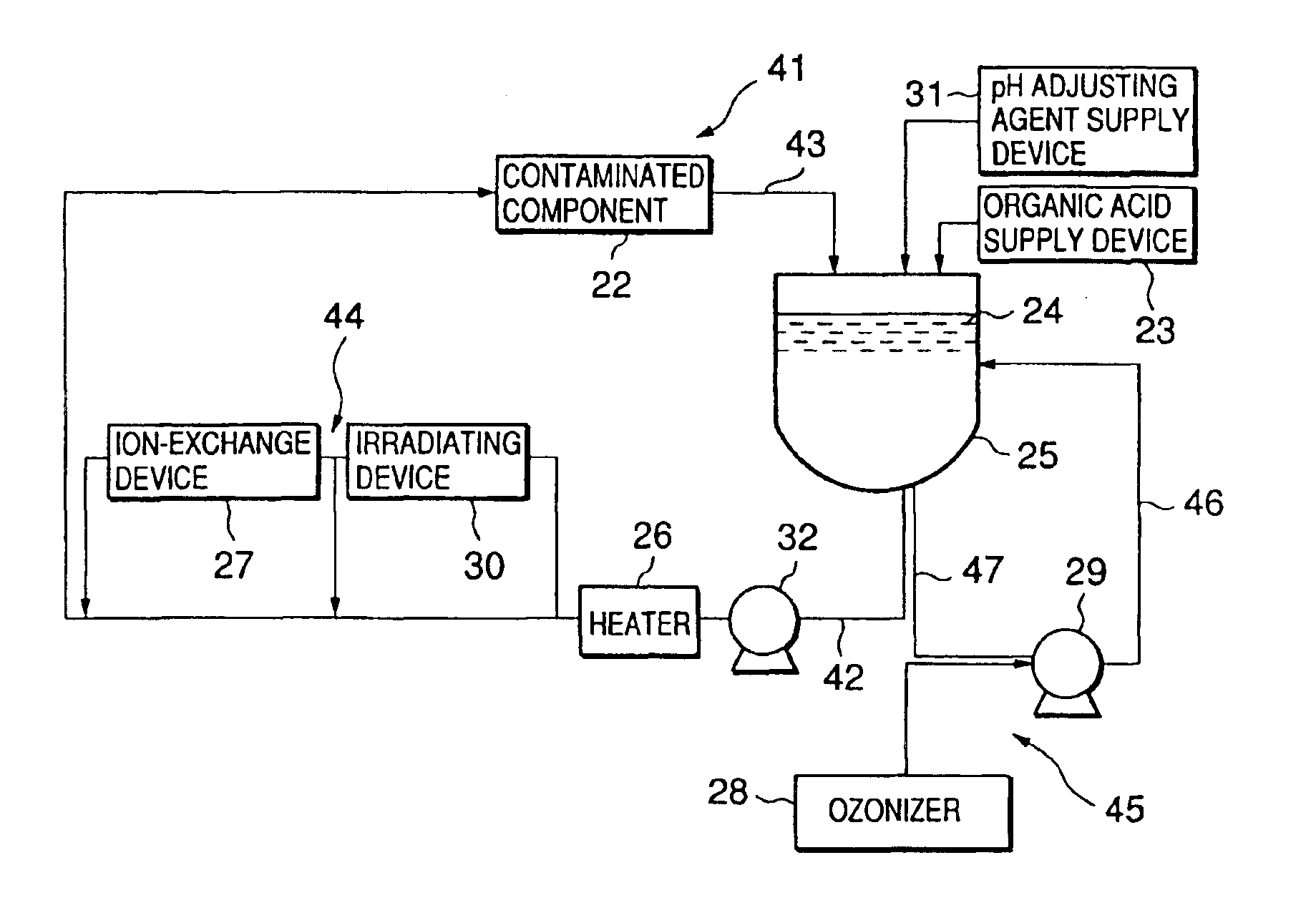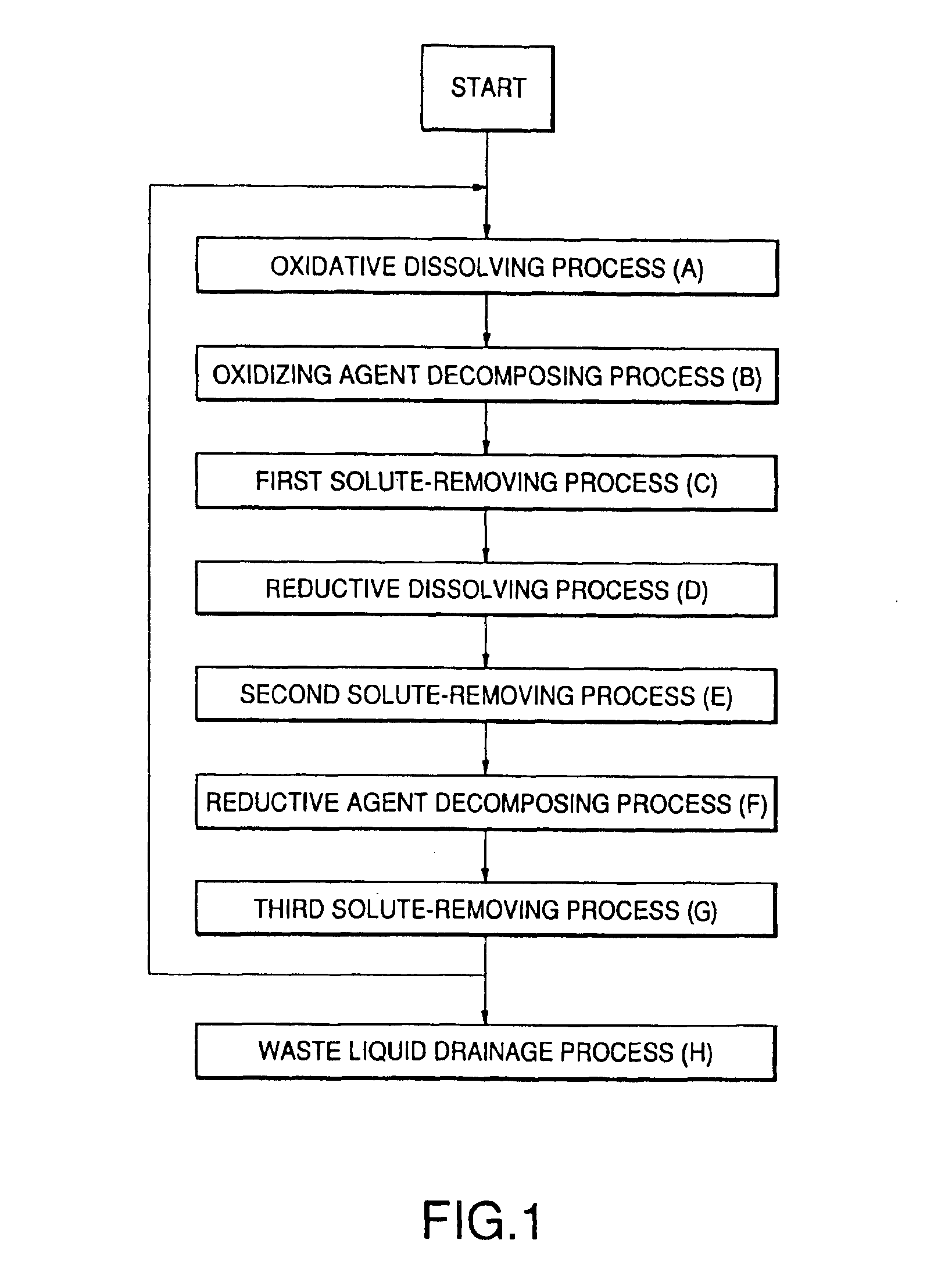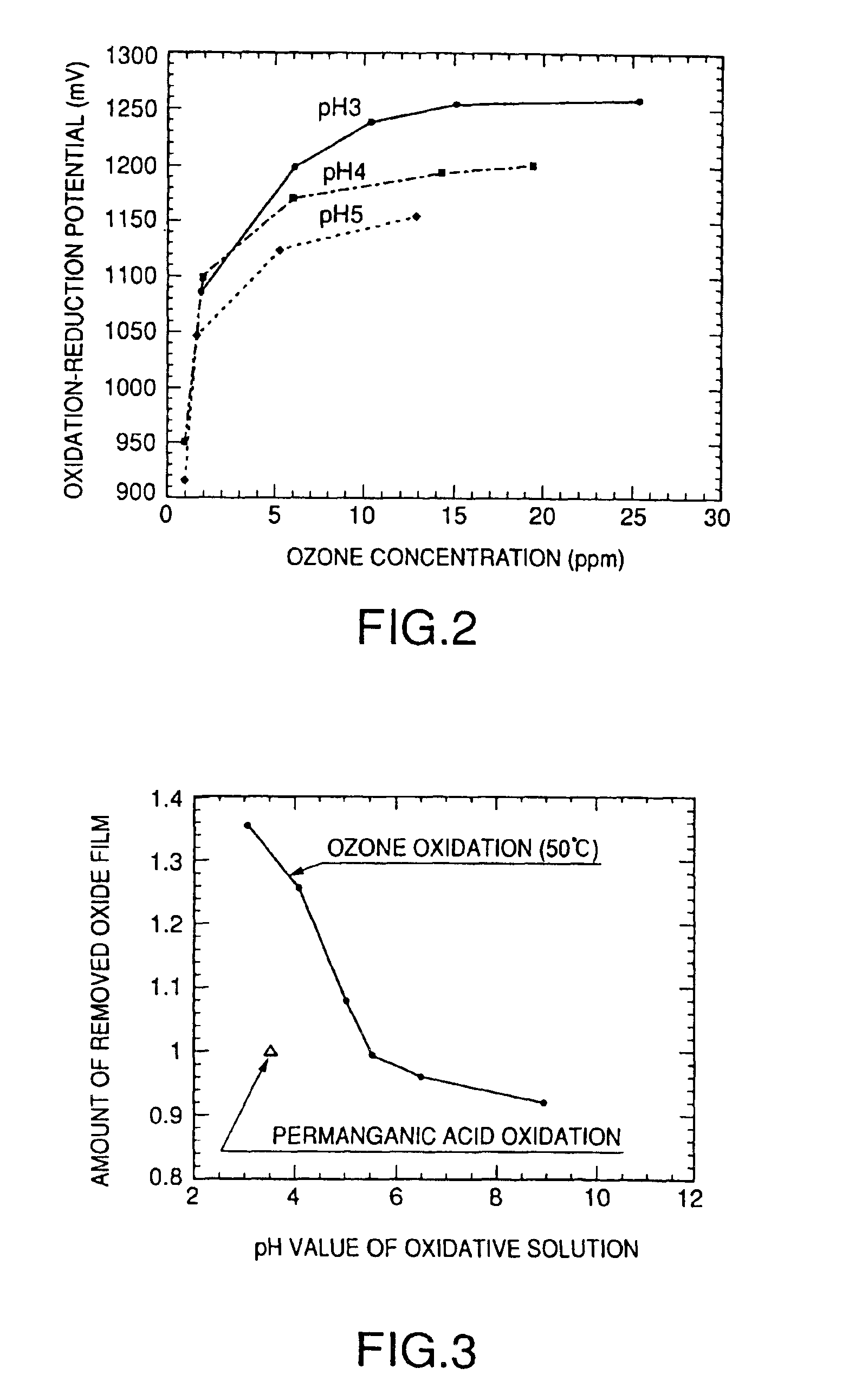Method of chemically decontaminating components of radioactive material handling facility and system for carrying out the same
- Summary
- Abstract
- Description
- Claims
- Application Information
AI Technical Summary
Benefits of technology
Problems solved by technology
Method used
Image
Examples
first embodiment
Referring to FIG. 15 showing a chemical decontamination system in a first embodiment according to the present invention, a contaminated object 22 is, for example, a pipe of a nuclear reactor or an in-pile device, such as a heat exchanger, through which a decontaminating liquid 24 can flow.
The decontaminating liquid 24 is stored in a buffer tank 25. A decontaminating liquid circulating system 41 is connected to the buffer tank 25 to circulate the decontaminating liquid 24 through the contaminated object 22.
The decontaminating liquid circulating system 41 has a supply line 42 connected to the bottom of the buffer tank 25 to supply the decontaminating liquid 24 to the contaminated object 22, and a return line 43 connected to the upper end of the buffer tank 25 to return the decontaminating liquid passed through the contaminated object 22 to the buffer tank 25.
A circulating pump 32, a heater 26, and a decontaminating liquid purifying system 44 provided with an irradiating device 30 and ...
third embodiment
A chemical decontamination system in a third embodiment according to the present invention will be described with reference to FIG. 18. This chemical decontamination system is intended for the decontamination of the inner surfaces of a coolant circulating pump 34 and a riser pipe 35 included in a boiling water reactor installed in a nuclear power plant. The riser pipe 35 has a horizontal section and vertical sections rising from the opposite ends, respectively, of the horizontal section. A pump 34 is connected to the horizontal section of the riser pipe 35.
The horizontal section of the riser pipe 35 is provided with a first connecting part 36 and a second connecting part 38 at positions on the opposite sides of the pump 34. The connecting parts 36 and 38 are connected to the opposite ends of a line of a decontaminating liquid purifying system 44, respectively. A decontaminating liquid circulating system 41, similarly to that shown in FIG. 15, comprises a heater 26, an ozone injectin...
fourth embodiment
A chemical decontamination system in a fourth embodiment according to the present invention will be described with reference to FIG. 19. This chemical decontamination system is intended for the decontamination of a contaminated object 40 which is a removable component of nuclear power plant equipment. A buffer tank 25 is sued for both storing a decontaminating liquid and immersing the contaminated object 40 in the decontaminating liquid. The contaminated object 40 is a device or a part through which the decontaminating liquid cannot be passed, such as the rotor of a coolant recirculating pump. This chemical decontamination system is able to achieve decontamination by a procedure similar to that carried out by the chemical decontamination system shown in FIG. 15.
PUM
 Login to View More
Login to View More Abstract
Description
Claims
Application Information
 Login to View More
Login to View More - R&D
- Intellectual Property
- Life Sciences
- Materials
- Tech Scout
- Unparalleled Data Quality
- Higher Quality Content
- 60% Fewer Hallucinations
Browse by: Latest US Patents, China's latest patents, Technical Efficacy Thesaurus, Application Domain, Technology Topic, Popular Technical Reports.
© 2025 PatSnap. All rights reserved.Legal|Privacy policy|Modern Slavery Act Transparency Statement|Sitemap|About US| Contact US: help@patsnap.com



